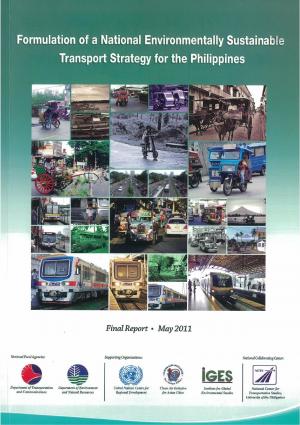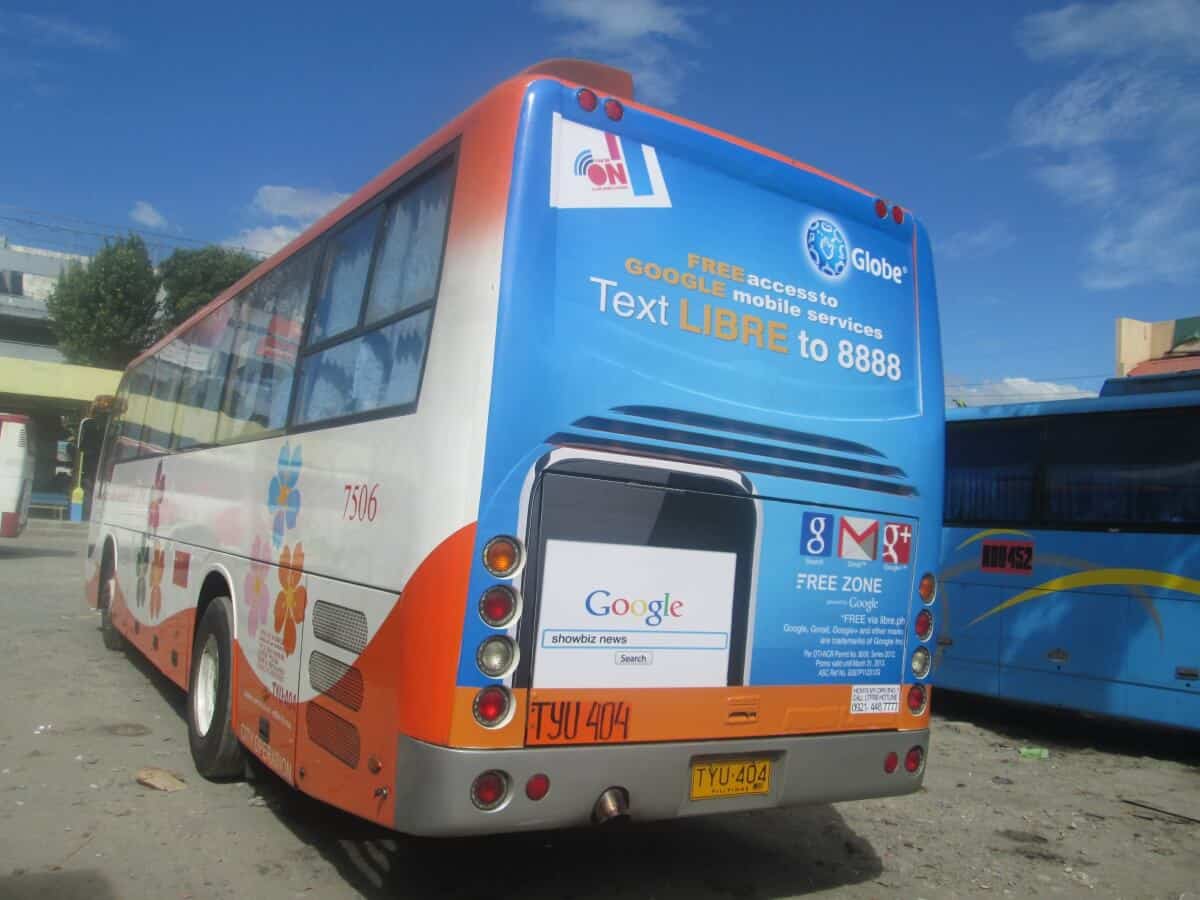Transit Advertising Philippines: An Innovative Means to Advertise
Transit Advertising Philippines: An Innovative Means to Advertise
Blog Article
Comprehending the Function of Transportation Advertising And Marketing in Enhancing Brand Name Presence and Customer Interaction
Transit marketing has actually emerged as a pivotal element in the marketing landscape, supplying one-of-a-kind chances for brand names to elevate their exposure and involve customers properly. With the ability to reach a captive and varied audience throughout their day-to-day commutes, these marketing techniques are not merely regarding visibility; they are regarding producing purposeful links with possible clients. As we explore the diverse benefits and cutting-edge techniques within transportation advertising and marketing, it ends up being vital to take into consideration exactly how these components collectively affect consumer assumption and actions, increasing concerns about their long-lasting influence on brand commitment.
Interpretation of Transportation Advertising
Transit advertising and marketing refers to the technique of promoting products, services, or brands with promotions put around public transportation systems. This kind of advertising incorporates a variety of positionings, consisting of posters on trains and buses, electronic screens at transit stations, and wraps on the outside of cars. It intends to get to a varied target market, profiting from the high foot website traffic related to public transit.
Transportation marketing is strategically placed to record the attention of travelers, who frequently spend substantial time waiting or taking a trip. By integrating advertisements into the everyday regimens of individuals, brand names can develop an enduring impression and foster brand recognition. The medium is particularly efficient in metropolitan atmospheres, where public transportation is a key mode of travel.
Additionally, transit advertising can facilitate local targeting, allowing organizations to get to details demographics based on transportation courses and terminal places. As city populations grow and using public transport boosts, this advertising technique has obtained prominence as an essential component of integrated advertising and marketing techniques. The dynamic nature of transportation advertising, integrated with its capacity to engage consumers in a captive atmosphere, emphasizes its significance in contemporary advertising and marketing techniques.
Benefits of Transit Marketing
The performance of transit advertising depends on its capacity to deliver a plethora of advantages to brands looking for to boost visibility and engagement. Among the key advantages is the comprehensive reach it uses; transportation advertisements can effectively target diverse demographics across metropolitan areas, reaching both pedestrians and commuters alike. This broad exposure dramatically boosts brand awareness.
Another advantage is the high regularity of impacts. As transportation vehicles follow established routes and stop at several places, they create repetitive exposure that reinforces brand messages. This regularity fosters familiarity, which is crucial in consumer decision-making.
Transit advertising is likewise economical contrasted to various other media systems. Provided its extensive reach and potential for high impressions, brand names commonly experience a reduced expense per thousand impressions (CPM), maximizing their advertising spending plan.
Additionally, transit advertisements can develop a sense of community link. By straightening with regional transit systems, brands can reverberate with local audiences and foster a feeling of regional satisfaction. This localized approach boosts brand loyalty and involvement, making transportation marketing an engaging option for companies aiming to strengthen their existence on the market.

Efficient Techniques for Transit Projects
To maximize the influence of transit campaigns, brand names ought to utilize calculated planning and execution customized to their target audience. Initially, identifying the group qualities of the target market using public transportation is essential. This enables brands to produce personalized messaging that resonates with possible customers.
Following, selecting the ideal transportation mediums is important. Whether utilizing bus covers, metro posters, or digital displays, each tool has unique advantages that can boost visibility. For example, vivid visuals on bus wraps can draw in focus, while digital ads can be upgraded regularly to reflect timely promos.
Moreover, integrating a natural branding approach across transportation systems guarantees uniformity and reinforces the brand's identification. Utilizing unforgettable taglines and distinctive designs will strengthen brand name recall among commuters.
By using these methods, brand names can properly harness the potential of transportation advertising and marketing, cultivating greater awareness and link with their target audience. Inevitably, a well-executed transportation project can drive significant development in brand name presence and customer involvement.

Measuring Influence and Engagement
In assessing the effectiveness of transportation marketing campaign, precise dimension of effect and engagement is essential for brand names seeking to maximize click here for more their advertising strategies. Metrics such as reach, regularity, and perceptions provide fundamental data to analyze exposure. Analyzing these aspects assists determine the amount of potential clients are exposed to the promotions during their daily commutes.
Interaction can be additional evaluated through consumer interactions, such as website traffic, social media states, and direct reactions to calls-to-action included in the advertisements. Utilizing devices like QR codes or special URLs can help with monitoring of consumer behavior directly connected to transportation campaigns. Surveys and responses systems likewise offer as beneficial techniques to gather qualitative information on customer understandings and recall of the promotion.
Moreover, advanced analytics and acknowledgment versions can associate transit direct exposure with subsequent getting actions, using insights into the roi. By utilizing an extensive strategy that integrates quantitative and qualitative steps, brand names can create a nuanced understanding of their transportation marketing effect. Eventually, this find out here now data-driven approach allows brand names to improve their campaigns, ensuring they reverberate successfully with target market and improve overall brand name visibility.
Case Studies of Effective Campaigns
Effective transportation ad campaign serve as compelling instances of exactly how reliable approaches can elevate brand exposure and engagement. Transit Advertising Philippines. One noteworthy instance is the "I Love New york city" project, which transformed the city's photo and drew in countless travelers. By utilizing train ads, billboards, and bus covers, the project created a strong, cohesive brand name identification, causing a significant uptick in tourist and neighborhood business patronage
Another excellent project is Coca-Cola's "Share a Coke" initiative, which leveraged transportation advertising and marketing to customize the brand name experience. By including popular names on advertising products throughout different transit systems, Coca-Cola fostered a deeper psychological connection with customers, encouraging them to share their experiences on social networks.
Additionally, the "Got Milk?" campaign efficiently utilized public transportation ads to reach a wide target market, enhancing the navigate to this website message of the value of milk in a well balanced diet regimen. The campaign saw a measurable rise in milk intake in target demographics.
These study highlight that when executed thoughtfully, transportation advertising and marketing can dramatically enhance brand visibility, foster customer involvement, and drive quantifiable results, showing its important role in contemporary advertising techniques. - Transit Advertising Philippines
Final Thought
To conclude, transportation advertising works as an essential tool for enhancing brand name presence and fostering customer engagement. By using strategically put advertisements within mass transit systems, brands can effectively enhance and get to varied target markets recognition with consistent exposure. The implementation of targeted messaging and innovative approaches further enhances the impact of transportation projects. Ultimately, the capability to gauge interaction and assess effective study emphasizes the efficiency of transit advertising in driving brand name commitment and customer communications.
Transportation marketing has emerged as a pivotal aspect in the marketing landscape, using one-of-a-kind opportunities for brand names to raise their exposure and involve customers efficiently.Additionally, transportation advertising and marketing can help with local targeting, enabling organizations to get to certain demographics based on transportation courses and station areas.In assessing the efficiency of transportation advertising and marketing campaigns, exact dimension of effect and engagement is vital for brands looking for to maximize their advertising methods.Effective transportation advertising projects serve as engaging instances of just how effective approaches can boost brand name presence and interaction.In verdict, transit advertising and marketing serves as a vital tool for boosting brand name exposure and cultivating customer engagement.
Report this page